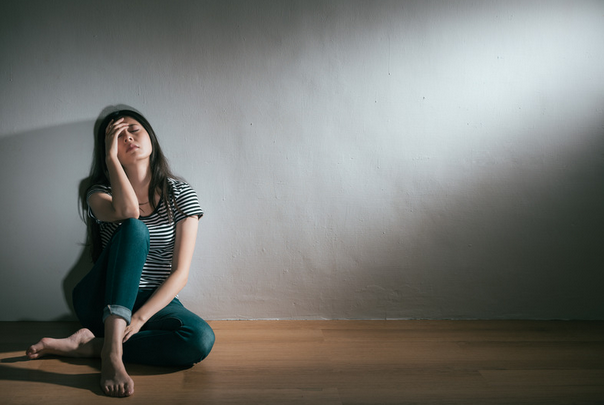Infertility brings anyone struggling to become a parent into a single club. We’re all different, with different stories and circumstances, but somehow, also all the same.
I am certainly no different. I wanted to be a parent for as long as I can remember. We struggled for years through multiple rounds of timed intercourse, IUIs, and IVF, until I had run out of options. None of the 14 embryos my husband and I created made it to blastocyst. None made it past day three, indicating the problem in development was with my eggs.
It was devastating.
In weighing our next options, we discussed finding embryos from donor eggs with my husband’s sperm, traditional adoption, embryo donation, or going through a clinical trial to improve my egg quality, followed by another attempt at egg retrieval in six months.
It had been years of trying, testing, needles, and medications. We wanted our baby, so we chose donor embryos. Our doctor recommended transferring both embryos due to my history (never being pregnant, mid-thirties, zero successes with interventions). To our surprise, not only did the embryos stick, a few weeks later, I found out I was pregnant with three babies across two sacs.
This is when I swiftly learned about selective reduction.
What is selective reduction?
According to The American College of Obstetricians and Gynecologists, selective reduction is the process of reducing the number of embryos in a multiples pregnancy based on each embryo's health status and viability.
When I started trying to get pregnant, I didn't think I'd have to utilize Assisted Reproductive Technology like IVF, let alone donor embryos. When I transferred two donor embryos, the last thing on my mind was that I would have to reduce two extremely wanted fetuses.
But it happened.
Dr. Mark Evans pioneered the reduction procedures in the 1980s, collaborating closely with Dr. Richard Berkowitz and Dr. Ronald Wapner. I spoke to Dr. Evans for this article.
How is fetal reduction performed?
Doctors recommend different procedures for reduction depending on the method and the timing.
For example, my twins were injected through my belly with potassium chloride into their abdominal areas, which gently stopped their hearts. In different types of multifetal pregnancy, where the fetuses are connected differently, physicians may use forceps to sever the attachment of the umbilical cord. Procedures are performed under the guidance of an ultrasound.
Selective reduction’s emotional rollercoaster
The doctor who performed my selective reduction was kind. As the needle pierced my abdomen for the first time, I started to cry. My husband squeezed my hand. I couldn’t explain it to them: I wasn’t crying because it hurt, I cried because this was the last feeling connecting me to my twins. The fluttering sensations I’d been able to feel had only intensified as the babies had grown. While I knew this was the best decision — the only decision — it didn’t mean I didn’t wish it wasn’t happening.
This contrast of grief, joy, and relief is common for people who undergo selective reduction. These were not unwanted children. They were the exact opposite. Selective reduction kept my other baby safe.
People ask, how could you choose? The choices aren't always clear cut or easy, whether it’s to reduce or which to reduce.
“Sometimes you have to do unpleasant things to get the right result,” Dr. Evans told me in an interview.
I agree.
With pregnancy reduction, the choices you have to make are bleak: You can save some, but you cannot save all. But, you do get a choice. Dr. Evans says, in his experience, about 50% of the time, women choose to reduce. In my case, my doctors explained I was guaranteed preterm labor. One doctor said, “You’ll be lucky to make it to 28 weeks.” The babies would be at least 12 weeks — three months — early.
There was a significant chance the twins would have issues as the pregnancy progressed, including the smaller twin, and could possibly stop growing altogether. There were also risks specifically associated with a triplet pregnancy like an increased risk of stillbirth or miscarriage for some or all of the babies.
The decision was tremendously complicated. It involved my health, of course, but also my feelings about my body, my autonomy, my husband’s feelings, and, ultimately, the health of our babies.
It felt profoundly unfair like, “Yes, you can carry and have a child, but in return, you will suffer an unknowable pain.”
We made a choice. We had to. But we didn’t make it lightly.
Maternal health, multifetal pregnancies, and selective reduction
According to John Hopkins Medicine, multifetal pregnancies carry a higher risk of death and other conditions, including hypertension, preeclampsia, gestational diabetes, postpartum hemorrhage, and anemia.
Mothers aren’t the only ones at risk. Multifetal pregnancies increase the risk to babies too. According to The American College of Obstetricians and Gynecologists, the risk of miscarriage is 25% for quadruplets, 15% for triplets, and 8% for twins.
As Dr. Evans puts it: “If you told someone they had cancer, and one treatment had a six percent mortality rate, and one had a two percent mortality rate, would you judge them for taking the one with the lower mortality rate? Of course not.”
I get it. We all cope with loss differently. Many — dare I say, most — of the women I’ve met through this experience choose not to share their selective reduction with anyone outside of their immediate or close family, similar to how most women choose not to share pregnancy losses before three months.
When I learned I needed a selective reduction, I found zero support groups, the reason for which became apparent as I started writing about and sharing my story. I found some academic papers, but nothing that said, “I’ve been here, too, and you are not alone.”
Eventually, a woman reached out to me from a social media group that operates like the Aunties network from The Handmaid’s Tale — you have to be invited in, you have to be vetted, you have to be approved. Why? Because this is a dangerous world for women who make choices about motherhood.
I found solidarity with these women, and they found solidarity with me. A week hasn’t passed since I started sharing my story that a woman hasn’t reached out to me via social media to say that she, too, has been blindsided by the possibility of selective reduction, and she, too, doesn’t know where to turn. We connect, I help her find the nearest resources and if she wants, I invite her to the group. It’s a good feeling to find other people who have been faced with one of the worst decisions, one of the most horrible life events you can imagine.
If you are facing the decision to reduce, know that you are not alone. There are resources out there. There are women and families who have gone and are going through it. And, as with many experiences in the fertility world, there is a community waiting to support you.
Kristin Diversi is a writer and versatile creative. She is passionate about reproductive health and justice and lives in Longmont, Colorado, with her husband and their son.






















